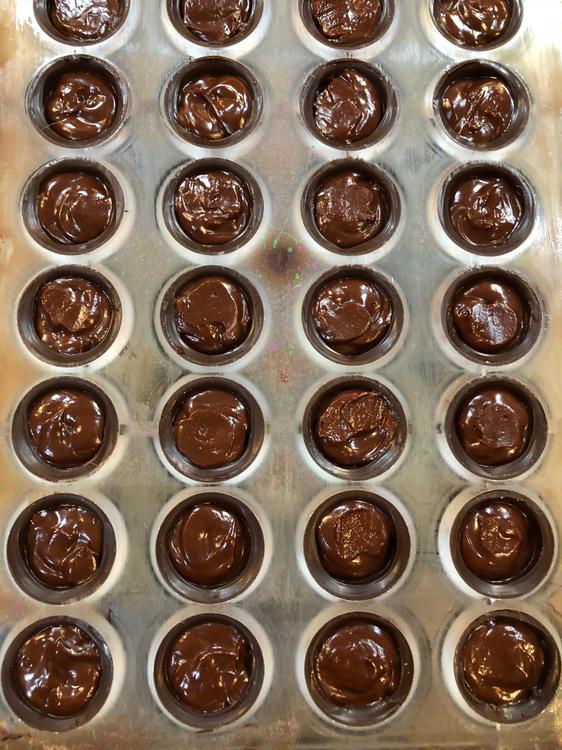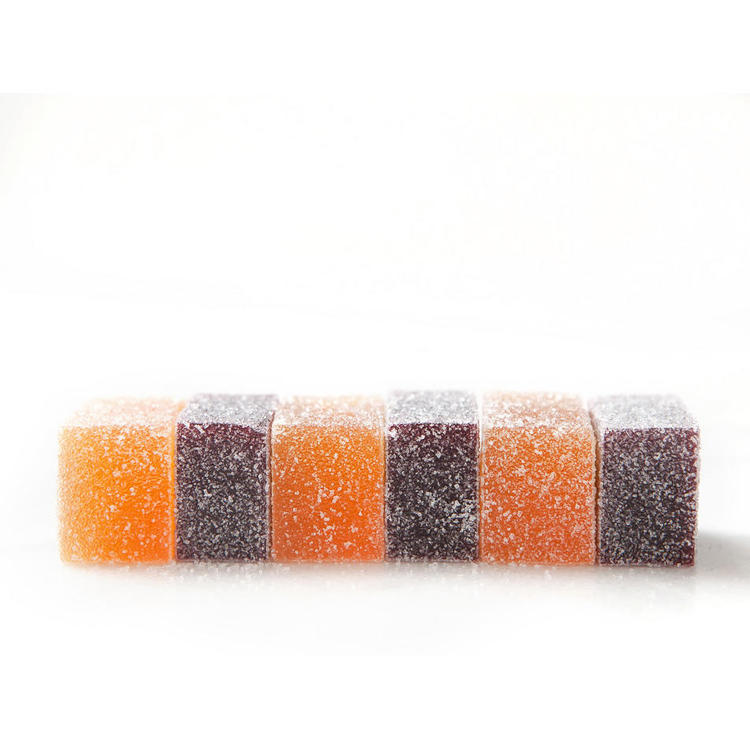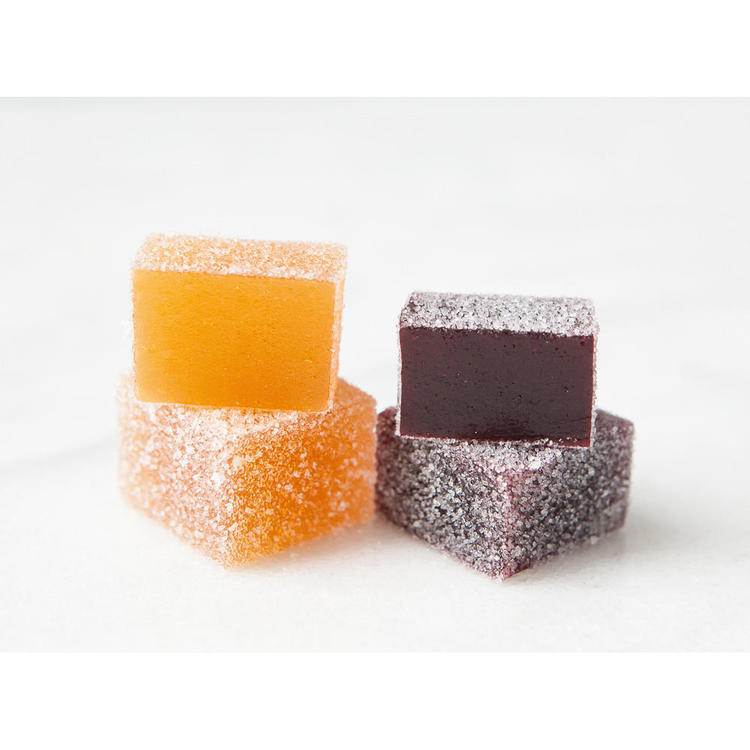
Pastrypastmidnight
participating member-
Posts
300 -
Joined
-
Last visited
Content Type
Profiles
Forums
Store
Help Articles
Everything posted by Pastrypastmidnight
-
Demo: Making Chocolate at Home....From Bean to Bar
Pastrypastmidnight replied to a topic in Pastry & Baking
I just bought a bunch of bars for a tasting class. No added cocoa butter: Dick Taylor Belize Dandelion Madagascar Dandelion Ecuador Domori Criollo Chuao Domori Arriba Ritual Peru Marañón added cocoa butter Ritual Madagascar Sambirano Ritual Ecuador Camino Verde Solstice Uganda Rózsavölgyi Porcelana added cocoa butter and lecithin François Pralus Cuba -
Thanks, Kerry!
-
Thanks!
-
Pâte de Fruits (Fruit Paste/Fruit Jellies) (Part 2)
Pastrypastmidnight replied to a topic in Pastry & Baking
For juice recipes it says to use 10oz (1 1/4 cups) juice and 8oz (1 cup) unsweetened applesauce. -
Pâte de Fruits (Fruit Paste/Fruit Jellies) (Part 2)
Pastrypastmidnight replied to a topic in Pastry & Baking
Greweling’s C&C at Home 1 pound (2 cups) fruit puree 24 oz (3 cups) sugar 6 oz Liquid Pectin 1TBSP lemon juice 1/4 cup sugar for coating Cook purée and 3 cups sugar to 238F. Add pectin and return to boil while stirring, boil 1 minute. Stir in lemon juice and remove from heat. Pour into pan lined with oiled plastic wrap. Cool completely (2 hours or overnight) Cut and roll in sugar. My my guess is that berries are going to behave differently than, say, citrus fruit, but that for the home cook this works well most of the time for most of the fruits. -
I’ve never actually had mold in one of my bonbons, but as I’m not in business yet, and I’m mostly still experimenting and gifting, I haven’t done a formal shelf life study yet. They do tend to fade in flavor (fruit flavors mostly) or dry out sometimes. I usually have a bit of glucose or invert sugar in my ganaches—depending on which book I’m using as a framework for recipes at the time. Do you have a standard percentage of glucose you add to your ganaches?
-
Pâte de Fruits (Fruit Paste/Fruit Jellies) (Part 2)
Pastrypastmidnight replied to a topic in Pastry & Baking
I’ve used the Greweling at Home recipe to make raspberry pâte de fruit successfully with liquid Certo pectin. I only tried it once, but mine didn’t sweat at all. I followed his instructions exactly. -
My husband just cut me some acrylic frames of different heights on a laser cutter. I haven’t used them yet. I’ll report back once I do.
-
That’s really interesting. What method do you use to mix your ganache? What is the shelf life like?
-
Ganache: Tips, Techniques & Troubleshooting
Pastrypastmidnight replied to a topic in Pastry & Baking
Pipe gianduja halfway, add inclusions, press them down into the gianduja and top off with more gianduja? -
Okay, thanks! It was a pretty small batch—I think I only lost 7 g of cream, but I’ll try that next time.
-
Pâte de Fruits (Fruit Paste/Fruit Jellies) (Part 2)
Pastrypastmidnight replied to a topic in Pastry & Baking
What is the viscosity like when you pipe it? Is it fairly firm holding peaks, or does it level out. Thank you for sharing all of your experiments—you’ve been so generous with your results, advice and discoveries. I really appreciate it! -
I weighed the cream after infusing/straining and added additional cream to make up the weight lost. Cream is 33%. The chocolate doesn’t have the split on it (cocoa solids vs. butter) but it is Madagascan criollo chocolate—which I kind of remember hearing is extra viscous? Maybe that’s part of it?
-
I still need to cap them but they feel—softish? Like they should, I think. I feel like they must be crystallizing before I can pipe. Like the agitation is maybe making it set up as it’s cooling down?
-
Pâte de Fruits (Fruit Paste/Fruit Jellies) (Part 2)
Pastrypastmidnight replied to a topic in Pastry & Baking
I let mine set, cut some and saved some out to pipe. I pulsed it in my food processor with a little corn syrup and a pinch of citric acid until loose and then processed. Tasted great. It piped just fine, but it’s pretty stiff. It didn’t level at all, but it was meant to be the top layer so I piped ganache over one and praline over another. I need to cap them some time today. I’ll share a picture of how they turned out once I know. -
I’ll try that next. Thanks. But it’s weird that it would be that thick with that ratio, right? I feel like I’ve read so many posts and books and I actually really like chemistry, but I feel like I don’t totally understand the science behind ganache and the role the various ingredients play in shelf life vs. viscosity vs. flavor vs. texture, etc.
-
I am having so much trouble with the viscosity of my ganache for molded bonbons. I made a lime ganache last night and by the time it was cool enough to pipe it was so very thick. 100g 65% dark 105g lime infused cream 9g invert sugar 13g butter I partially the chocolate until it was 35C, heated the invert sugar and cream to around 40C and added it in 4 additions, making sure the temperature was between 35 and 40C (as per the Valrhona method), added the butter at 34C, cooled to 29C and piped. You can see how thick it was: The ratio of chocolate to cream is already right about 1:1. Is it the method? Thoughts? This is not the only time I’ve had this problem. The only time I’ve ever achieved a self-leveling ganache it was a white chocolate one.
-
Pâte de Fruits (Fruit Paste/Fruit Jellies) (Part 2)
Pastrypastmidnight replied to a topic in Pastry & Baking
This is the kind Kriss Harvey shared that he uses on IG. I ordered from L’Epicerie and it took over a month to get it and communication from the company was almost non existent. It actually ended up arriving (I had given up hope) on the day I was about to purchase the kind @Tri2Cook mentioned from Le Sanctuaire. The kind from L’Epicerie is by Louis Francois—the brand Kerry just recommended. -
I like how you think .
-
Thank you for typing that all out. That does make sense. And I suppose, I can calculate the grams per mm cubed based on the pan I used and then convert that for a frame with a bigger footprint? And my kids are always trying to tell me they’ll never use math in real life .
-
Thanks you! And I think that works fairly well for a ganache where most of the measured weight makes it into the final product (although it’s not easy to tell how that weight—i.e. how high up the pan it will go—will fit into your frame), but I’m a little stumped with recipes that include reducing down the liquid, like a caramel or a pate de fruit, because different fruits have different water contents, etc. So aren’t different amounts of solids left behind after the boiling process? The lemon took waaaaaaay longer to make—there was also a lot more water to boil away. So the final product masses can vary as percentages of the initial ingredient masses, depending on the flavor.
-
Forgive me if this has been addressed—I searched and didn’t find anything. Last night I made two flavors of Boiron recipe pâte de fruit. One was blackberry and one lemon. The lemon had you cook a large amount of pear purée (1000g) and later add 970g lemon and cook again as opposed to the blackberry with 1000g fruit. The sugars were not identical but were fairly close. So, clearly the lemon makes more and when poured into the same size pan/frame will reach a different height. How do I figure out how much to make to fit a certain frame? Is there a more elegant solution that making a full recipe, pouring it into the desired receptacle to the desired height, weighing the excess and weighing the amount in the pan/frame and using that to scale the recipe? What about ganache/gianduja/etc.? Is there a ballpark grams-per-cubic-mm or something? You can see the height difference here (both were half the Boiron formulas poured into 8x8 pans). There is much more lemon due to the added pear, but not quite double I’m guessing because the lemon is mostly water and a lot of it boils off.
-
Pâte de Fruits (Fruit Paste/Fruit Jellies) (Part 2)
Pastrypastmidnight replied to a topic in Pastry & Baking
That’s pretty close to what I was doing at the end as I just kind of adjusted organically—definitely helps to know I was going in the right direction. I’ll keep practicing . I’ll try that, thanks!




